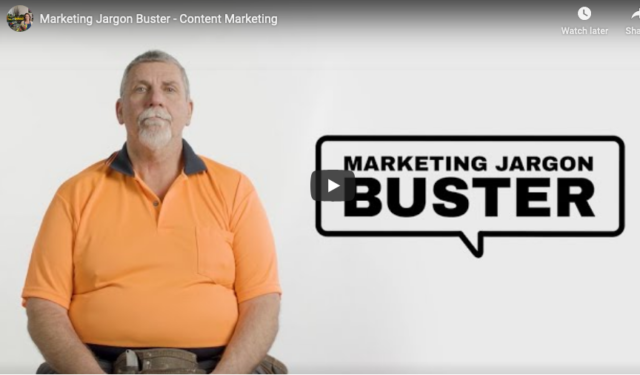You’ve heard it said time and time again – ‘Content is King’. As worn-out as this phrase may be, it does hold truth. Compelling, well-written content is one of the best ways to drive customers to your website.
But not all content is created equal. In fact, many businesses out there create content that doesn’t move the dial or bring in any new leads.
To avoid that scenario, we’ve outlined some of the best types of content and promotion methods that will help you bring more people to your website (and convert them into paying customers).

The basics for creating healthy content.
Before we break down how to get traffic to your website through the power of content, let’s look at the concept of ‘healthy content’.
Whether you’re writing a landing page, a sales email, a blog or something else entirely, there are certain things you should do to make sure the content will resonate with readers.
Here are some things keep in mind:
Well-written, edited copy.
Readers today are bombarded with options for content. They will only stick around to read something if it’s well-written—this means it doesn’t contain major errors; it’s written in plain English; and it uses a tone that is unique and engaging.
If you don’t have a professional writer on staff, you can look into hiring one on a freelance basis or enlisting the help of Yellow Pages.
Make sure you have at least one person on your team, aside from your writer, who is in charge of editing the content—even the best writers make mistakes and a fresh pair of eyes can make a huge difference!
Formatted for the reader.
Have you ever opened a blog article to find an impenetrable wall of text? Too many long paragraphs with no breaks is a big turn-off for readers. Break up the content with images, graphics, videos and, most importantly, sub-headers so it’s easy to digest.
Plagiarism-free and up-to-date.
Readers are only interested in content that is unique, well-researched and up-to-date. Take time to update your most popular articles every few months to make sure they contain recent information.
SEO-driven content.
Search engine optimisation (SEO) and content marketing go hand-in-hand. There are a lot of moving parts when it comes to SEO, so here’s a good starting point if you’re new to the subject.
SEO is an enormous topic but, if you’re aiming for success with this method, high-quality content is the key. If you’re consistently creating high quality content that solves problems for your readers, you’re already likely doing some of the things that are important for strong SEO.
Beyond healthy and frequent content creation, here are some of the other most important elements of SEO to keep in mind:
- Keywords implemented throughout your content
- Meta data (descriptions and alt tags on images) filled out with unique copy
- High-quality content creation (landing pages, blogs, thought leadership, etc.)
- Backlinks (links pointing from strong websites to your own website)
- Internal linking (links leading from one page to another on your own website).
RELATED: How SEO and content marketing work together.

The best types of content for generating traffic.
With so many different types of content out there, it’s hard to know which ones will do the best job bringing traffic to your website.
A healthy content marketing strategy involves a diverse range of content, so don’t pick just one option from this list. Instead, think about your goals and choose the content types that work best for what you’re trying to do.
RELATED: Free guide on creating standout content for your business.
Long-form blogs.
If you’re striving for SEO, it’s hard to beat long-form blog articles. These content pieces, usually at least 1,000 words, give readers a deep dive on a particular topic that’s both important to them and relevant to your product and services.
For example, if you run a financial planning service, you might write a long-form article about how people can improve their credit score. A dog groomer might write an article about the best ways to care for your pooch’s coat between groomings.
In both of these scenarios, there would be opportunities to put in calls-to-action that are both relevant and likely to drive traffic.
The financial planner could provide a link to her consulting services for people who are improving their credit score and want more help. The groomer could put in a number of reminders about booking in grooming appointments.
How-to articles.
When picking up a new skill or attempting to complete a task, people turn to the internet for answers. And you can be there to answer their queries if you write strong how-to content.
These types of content pieces come in many forms—you might create a how-to video for one of your products/services or a text-driven walk-through on how to do something related to your industry. Either way, focus on making it clear and easy for the reader.
Download your free ‘How-to article template’ here.
Video content.
According to Cisco, by 2022, videos will make up more than 82% of all consumer internet traffic.
People love watching videos, whether it’s a product unboxing, a how-to guide (see above) or something fun and simple. When creating video content on your site, it’s a good idea to include a transcript or blog article with it.
This is useful for two reasons: first, it appeals to members of your audience who prefer reading over video. Secondly, Google’s search engine algorithm understands text but it can’t comprehend video as well.
Giving a text write-up of the video on the same page makes it easier for search engines to understand what the video is all about. In other words, video transcripts are good for SEO and user experience.
Graphic content.
Humans are visual by nature, so creating visual content is a good move. Thirty-two percent of marketers advocate for visuals as being the most important form of content for their business.
Infographics are the most common type of visual content, but you can also look into creating things like a photo series, mini graphics showing quotes or quick tips, or well-designed eBooks.
Templates, checklists and guides.
Downloadable content serves two purposes for small businesses—the content itself can generate traffic and offering a free giveaway of something useful encourages people to sign up to your mailing list. Why not kill two birds with one stone?
When coming up with a downloadable template, think about what problem your customers might be facing. For example, if you run a home renovation business, your audience might have trouble figuring out what to do before they start their renovation.
Why not provide them with a downloadable checklist titled ‘Your Home Renovation Prep Checklist’. This asset could be offered to any of your new clients but also advertised on your website and social media pages to drive more traffic to your site.
Download your free ‘Checklist template’ here.
Interviews with influencers.
Generating traffic via your content is a lot easier with the help of an influencer—and we aren’t necessarily talking about Instagram models.
Interviews with experts in your industry, happy customers or interesting people who have a decent online following can make your website traffic grow exponentially.
Interactive content.
If you really want to drive traffic to your site, consider putting together a piece of interactive content.
Things like quizzes and clickable infographics can drive a lot of engagement and are great for sharing, which boosts your social media marketing strategy.

A promotion strategy for success.
You can create the most compelling, well-designed content but, without a promotion strategy, it won’t have much of an impact. How you promote your content is up to you (and your budget) but here are a few of the best methods for getting more eyes on your work.
Social media.
By far, social media is the best place to promote your content. Facebook, Twitter, Instagram, LinkedIn, and Pinterest all offer an avenue for organic traffic growth, or you can put some budget behind advertising on these platforms and see your numbers grow even faster.
Third-party promotion.
Sometimes you can use the power of another website to drive traffic to your own. Try getting some content published on another site by creating a guest post or collaborating with others in your industry.
Look for businesses that aren’t a direct competitor but share a similar audience and reach out to see if they’d be open to collaboration.
Wrapping it up.
Content marketing is one of the best ways to generate organic traffic to your website. With consistent posting, a diverse content portfolio and a strong promotion strategy, you’ll be on your way to gaining new customers, fans and followers.
Our team of SEO experts are pros at creating engaging, effective content. Learn more about our SEO services for small businesses.
